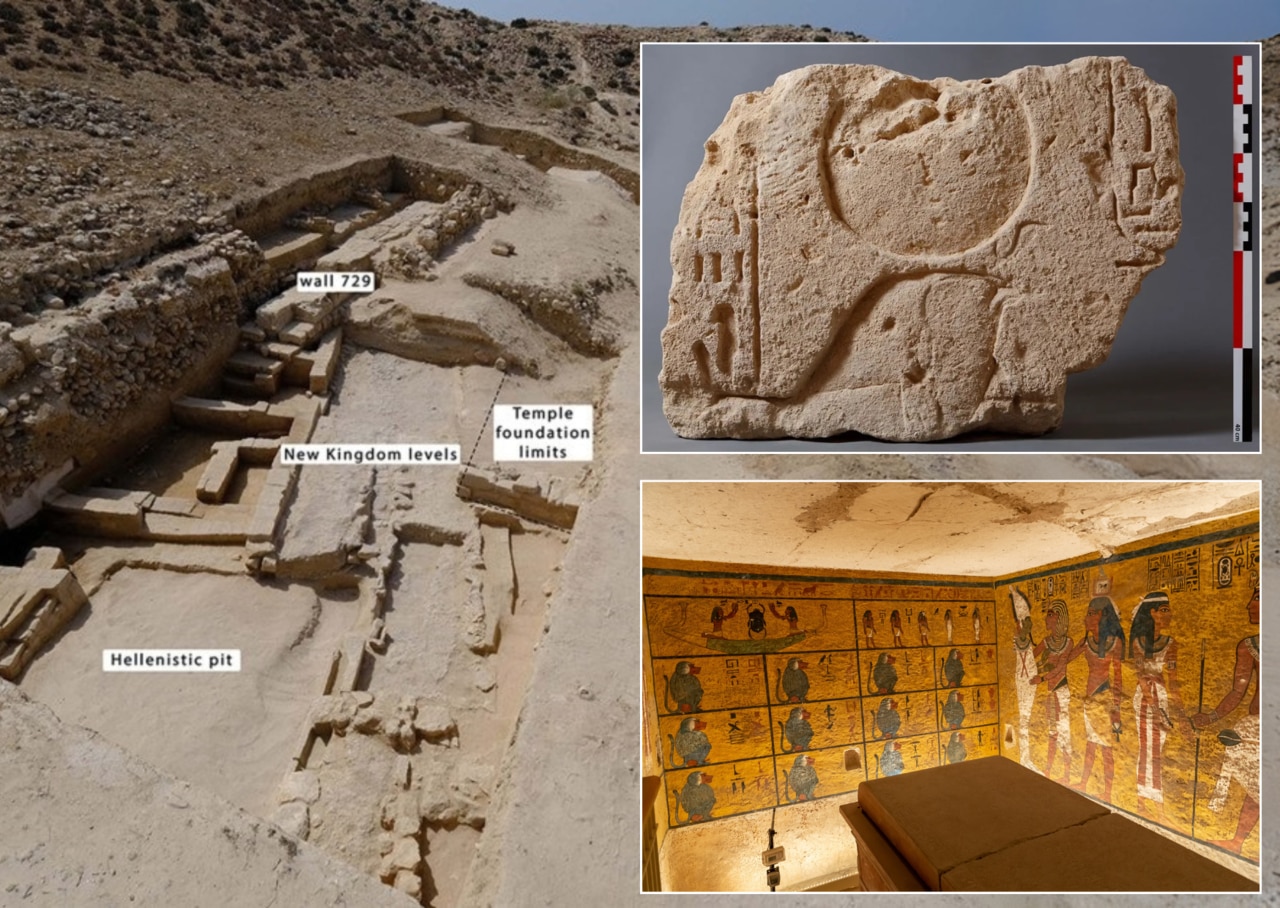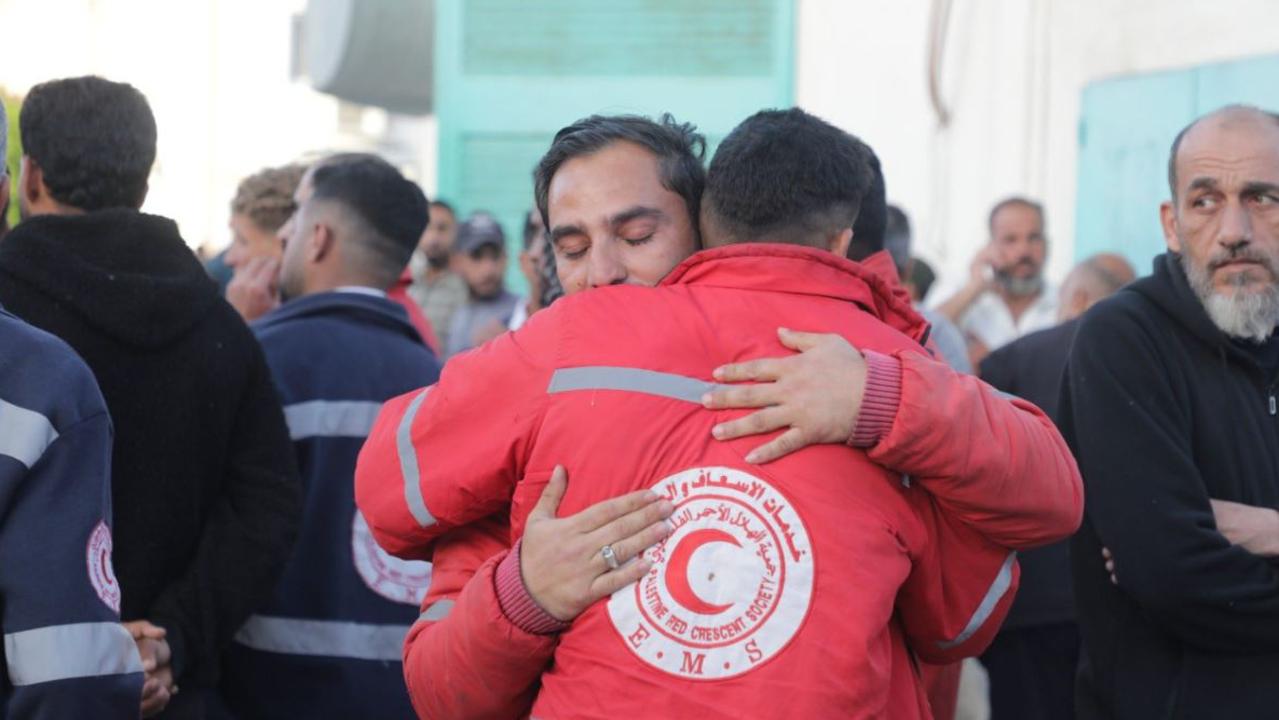‘Journalists or jihadists?’: Detail in Hamas ‘terrorist surrender’ sparks rage
It appears there’s more than meets the eye when it comes to the dozens of half-naked Hamas terrorists paraded by Israel this week.
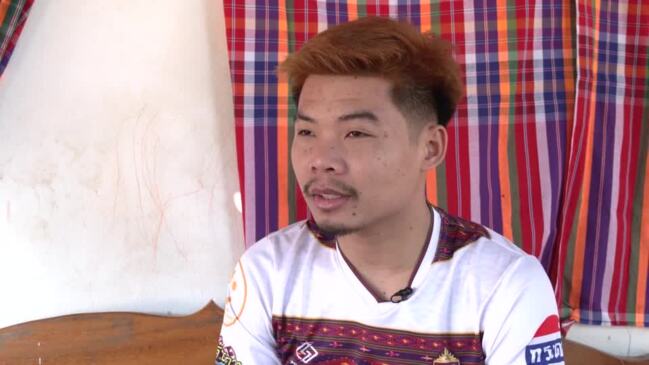
Photos and video footage show dozens of men being stripped to their underwear, blindfolded and having their arms tied behind their backs.
Beyond that point, the fog of war makes what actually happened on Thursday in a Gaza Strip refugee camp almost impossible to dissect.
There is confusion about whether these individuals were civilians or combatants, journalists or jihadists, and whether they were terrorists or terrorised.
Pro-Israeli accounts tout the incident as a major victory over Hamas terrorists. Pro-Palestinian accounts say these men were seized from a UN school sheltering those whose homes had been destroyed in the ongoing war.
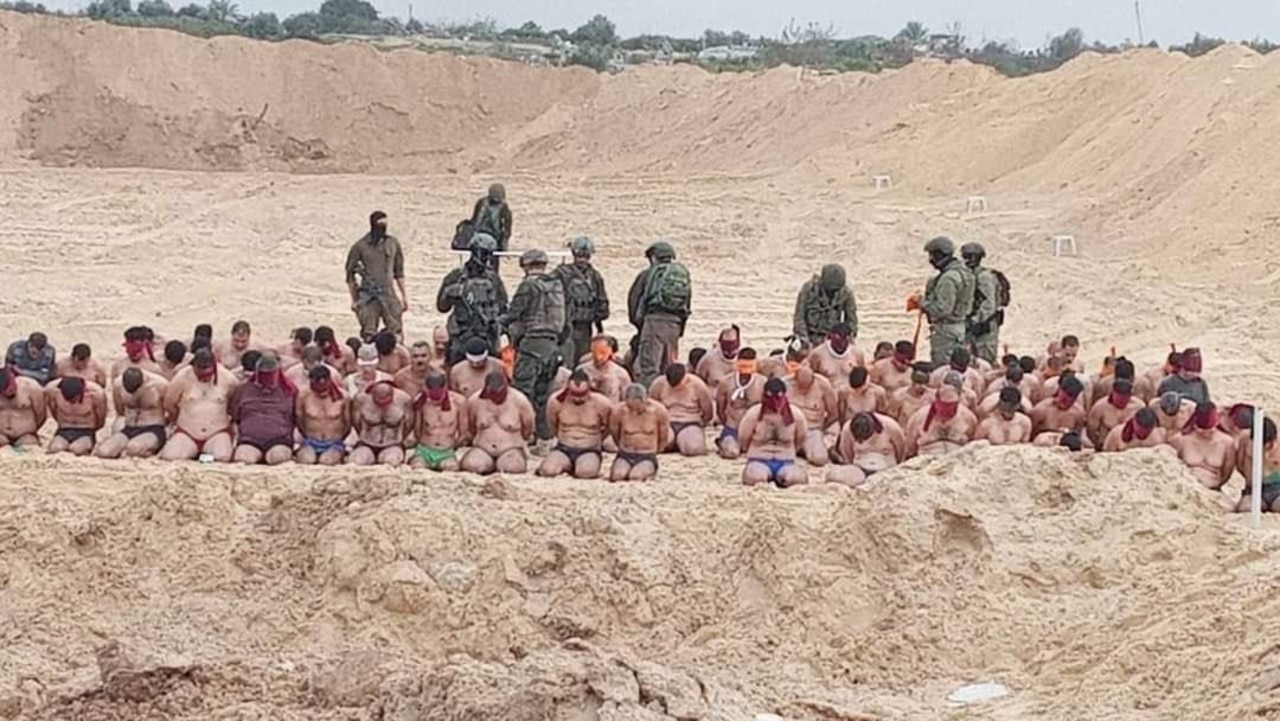
“Israeli media did not show the murder of Palestinian children and innocent civilians, or the destruction of Gaza. But Israeli media has no qualms about showing these images of Israeli occupation forces detaining and stripping civilians taken from a UN shelter in Gaza today,” Ambassador Husam Zomlot, the chief of the Palestine Mission to the UK, said Friday.
“This evokes some of humanity’s darkest passages of history. It is well past time that the world speaks as one and demands – and enforces – an immediate and permanent ceasefire.”
The IDF is yet to issue a formal statement about the mass arrest.
However, reports in Israeli media state the men had surrendered to Israeli troops in the Jabalia refugee camp, established by the United Nations for Palestinians expelled from their homes during the 1948 war.
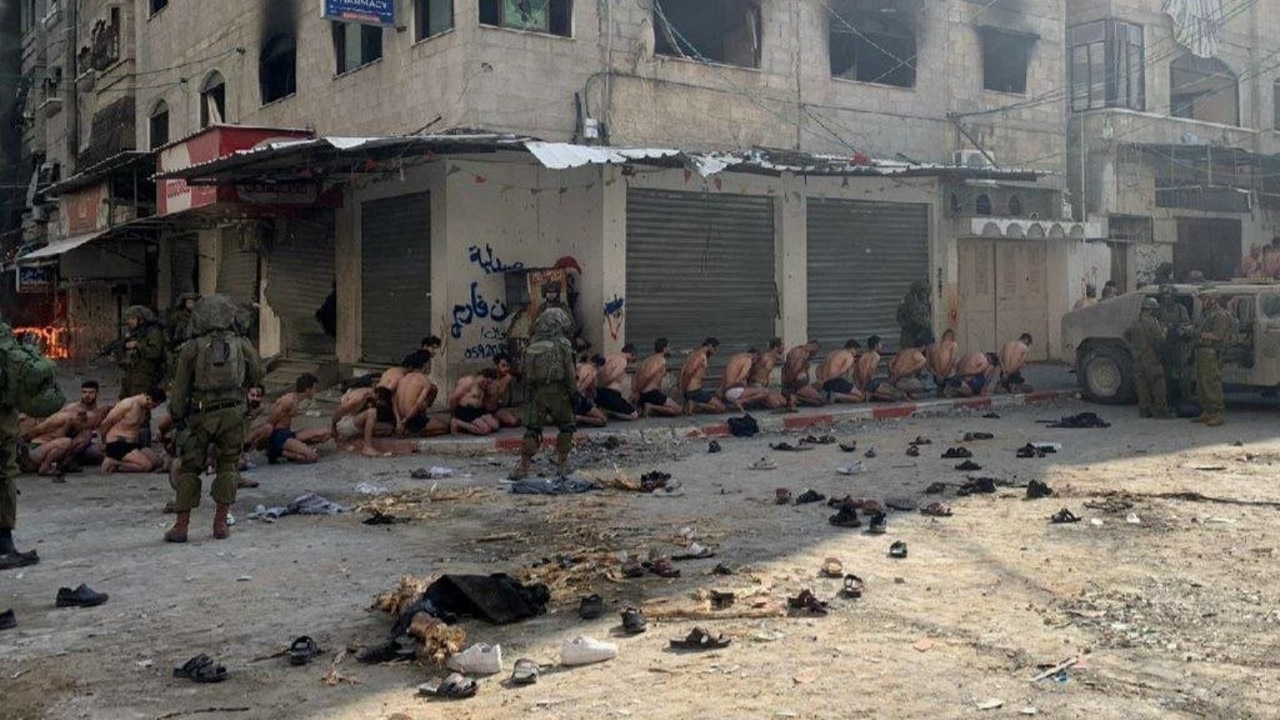
IDF Spokesperson Daniel Hagari only obliquely addressed the incident in his daily briefing: “Jabaliya and Shejaiya are ‘centres of gravity’ … for terrorists, and we are fighting them. They are hiding underground and come out, and we fight them,” he said.
“Whoever is left in those areas, they come out from tunnel shafts, and some from buildings, and we investigate who is linked to Hamas, and who isn’t. We arrest them all and interrogate them.”
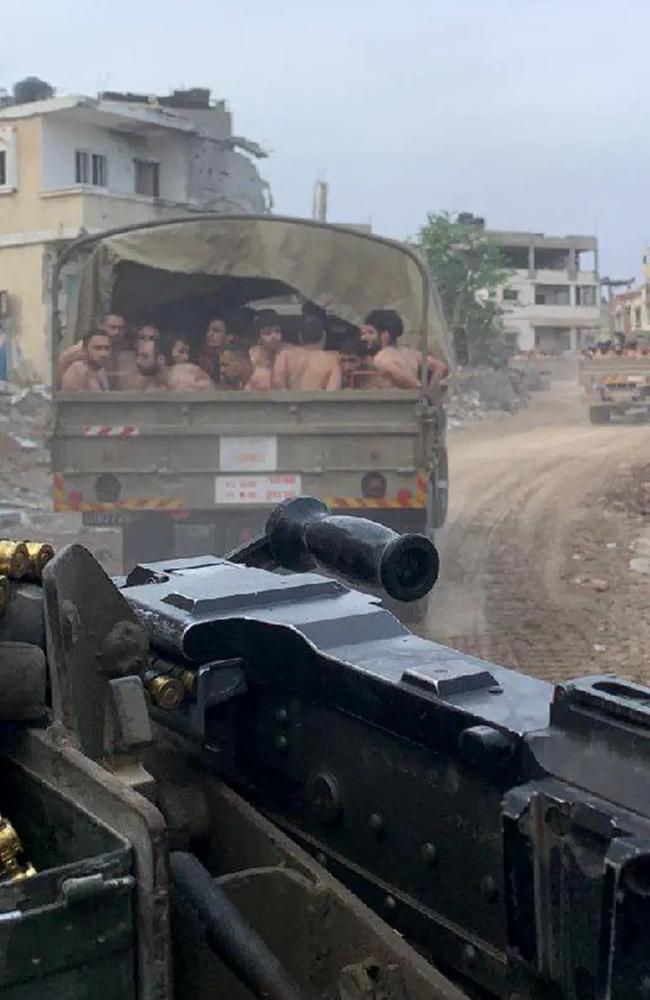
Wolves in sheep’s clothing
The IDF on Thursday released footage it says was taken from a head camera found on the body of a Hamas gunman during fighting this week in Jabalia. It shows armed men wearing combat vests and webbing over civilian clothing crawling through a damaged building in an attempt to target Israeli forces with anti-tank rockets.
This, according to United States Military Academy urban warfare expert John Spencer, is why suspects are stripped to their underwear.
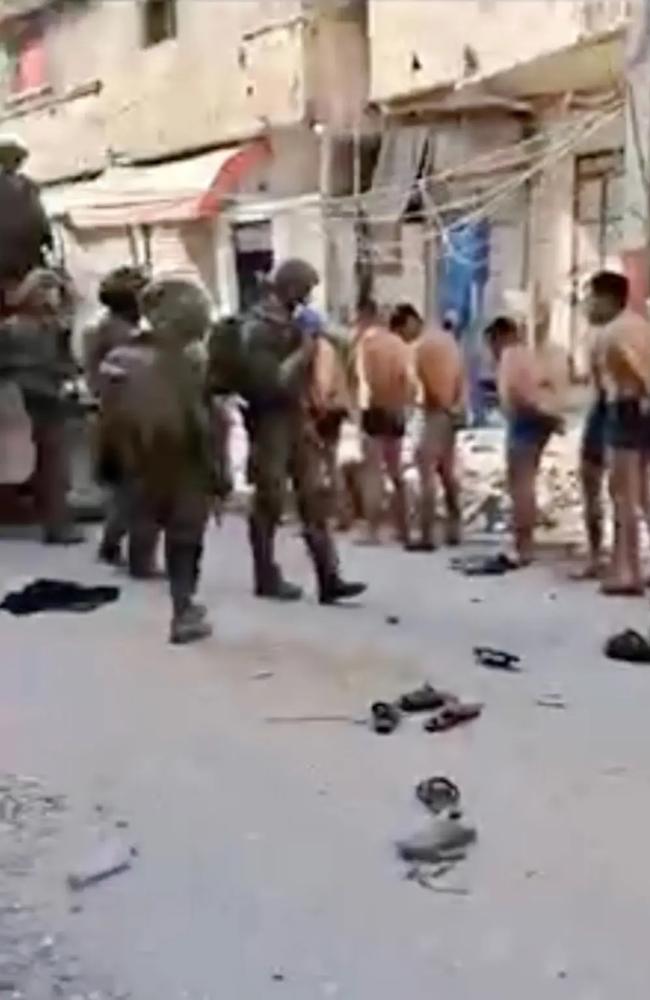
“In Israel and Gaza, combatants often have weapons and explosives (suicide vests and others), so a tactic of the IDF is to have the prisoners remove their clothing down to their underwear from a distance to ensure they are not a threat to their captors or other prisoners,” he explains.
They’re then moved to a secured area for “processing for intelligence and detainment”.
“Combatants are required to distinguish themselves (think the armbands defenders in Ukraine wore at the beginning of Russia’s invasion). Hamas combatants/terrorists attempt to hide as civilians to use their protected status against the IDF – a practice called lawfare and a war crime.”
Identifying Hamas fighters is a challenge for the Israeli army. Especially amid the chaos of the ground invasion.
The United Nations says more than 80 per cent of Gazans have been forced out of their homes since Israel crossed the border in response to a Hamas terror attack that killed 1200 and seized 240 hostages. Roughly 140 hostages are yet to be released.
Some 1.1 million Palestinian refugees have reportedly sought shelter in UN-run schools, hospitals and administrative facilities in the crowded 365-square-kilometre enclave.
Now, Israel wants all 1.9 million Palestinian refugees to be concentrated in a single 8km square patch of land in the coastal town of al-Mawasi.
Civilians or combatants?
One of the men lined up in their underwear in a wreckage-strewn street has been identified as high-profile Palestinian journalist Diaa Al-Kahlot.
One of his publishers, Al-Araby (The New Arab), says he and male members of his family had been seized from Beit Lahia, a settlement on the northern edge of Jabalia.
“Kahlout’s sister said her brother was forced at gunpoint to leave his disabled seven-year-old daughter. She added that the men were taken away, stripped and beaten by Israeli forces,” the news service reports.
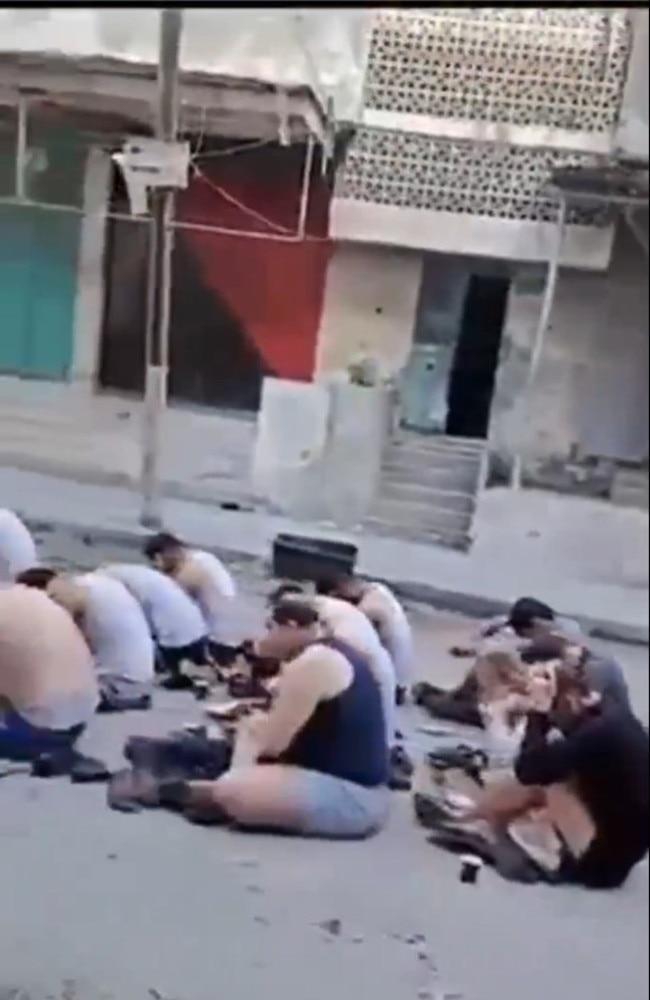
The editor-in-chief of Al-Araby Al-Jadeed, Hussam Kanafani, accused the Israeli army of deliberately “arresting, targeting and assassinating” journalists to prevent them from “documenting its crimes and massacres”.
“We will make every effort possible, in cooperation with international institutions and organisations concerned with the rights and freedom of journalists in the world, to determine the whereabouts of our colleague Diaa and release him as soon as possible,” Mr Kanafani said.
Israel’s attacks on Gaza and southern Lebanon have reportedly killed 75 journalists and wounded at least 80 others. The number of imprisoned journalists is 41 in the West Bank and three in Gaza.


